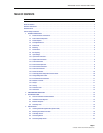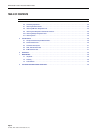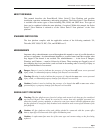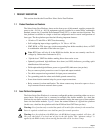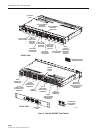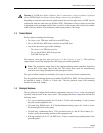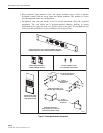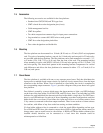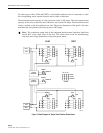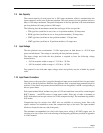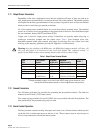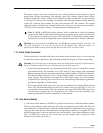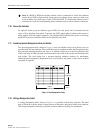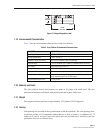
ADCP-80-526 • Issue 6 • December 2006
Page 5
© 2006, ADC Telecommunications, Inc.
1.5 Accessories
The following accessories are available for the fuse platform:
• Standard size GMT, KLM, and TPA type fuses
• GMT colored fuse-value designation pins (rivets)
• Cable management bar kits
• GMT fuse pullers
• Two-hole compression connector lugs for input power connections
• Lug terminals to connect #10 AWG wire to earth ground
• GMT fuse value designation pin holders
• Fuse value designation card holder kits
1.6 Mounting
The fuse platform can be mounted in a 19-inch (48.26 cm) or a 23-inch (58.42 cm) equipment
rack. Two pairs of mounting brackets, one pair for 19-inch racks and one pair for 23-inch racks,
are provided with the fuse platform. The fuse platform can be flush mounted or recessed 1, 2, 3,
or 4 inches (2.54, 5.08, 7.62 or 10.16 cm) from the front of the rack. The mounting brackets
allow mounting in racks with WECO 1.00-inch (2.54 cm) hole spacing or EIA 1.25-inch (3.18
cm) hole spacing. The slotted hole pattern in the mounting brackets compensates for vertical
rack differences and allows the fuse platform to be mounted in either 1.75- or 2-inch (4.45 or
5.08 cm) rack spaces.
1.7 Power Buses
The fuse platform is available with one or two separate power buses. Each bus distributes the
input power to multiple fused output circuits. In each bus circuit, current flows from the input
connector to the fuse bus. When a fuse is installed in a fuse holder, the circuit is completed to
the corresponding output connector. Figure 3 provides a diagram of the power buses in a typical
fuse platform.
Fuse failure is sensed by a sensor which causes the alarm monitor to light a red LED indicator
on the front of the fuse holder. For KLM, KTK, and TPA fuses, there is an individual red LED
indicator for each individual fuse because each fuse holder holds a single fuse. For GMT fuses,
there is a red LED indicator for each set of fuses (depending on product configuration, each fuse
holder holds four or ten fuses). Fuse failure also opens and closes a set of alarm contacts (form
C dry contacts) connected to the alarm output terminals. There is one such set of alarm contacts
for each bus, with failure of any fuse on the bus causing an alarm condition.
If a fuse holder without a fuse is connected to a load, the result differs depending on fuse type.
For a KLM and KTK fuses, this situation causes the red LED to light and the alarm contacts to
change states, same as would occur in a fuse failure. A KLM or KTK fuse holder without a fuse
installed should, therefore, not be connected to a load since this situation could be
misinterpreted as a failed fuse.



